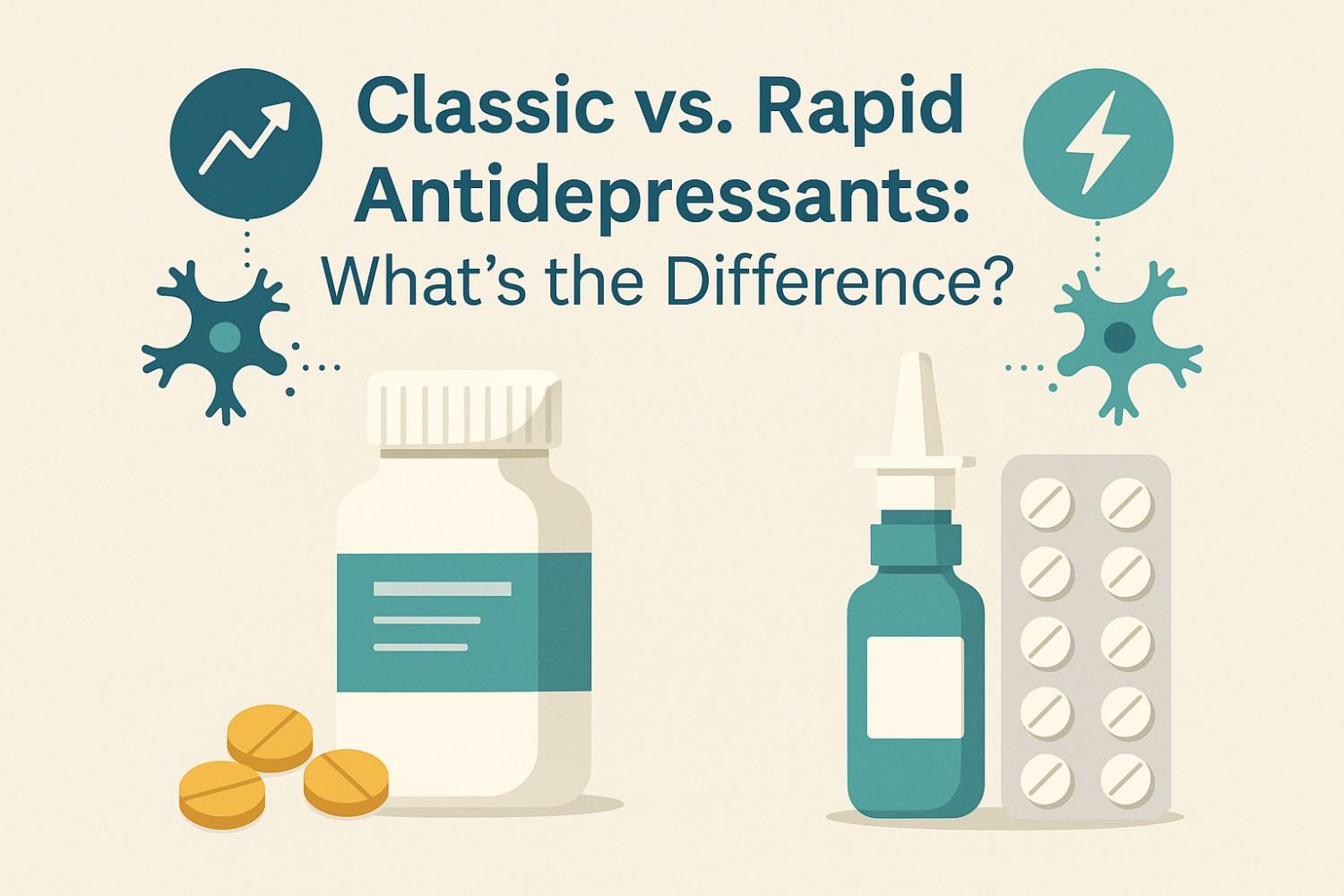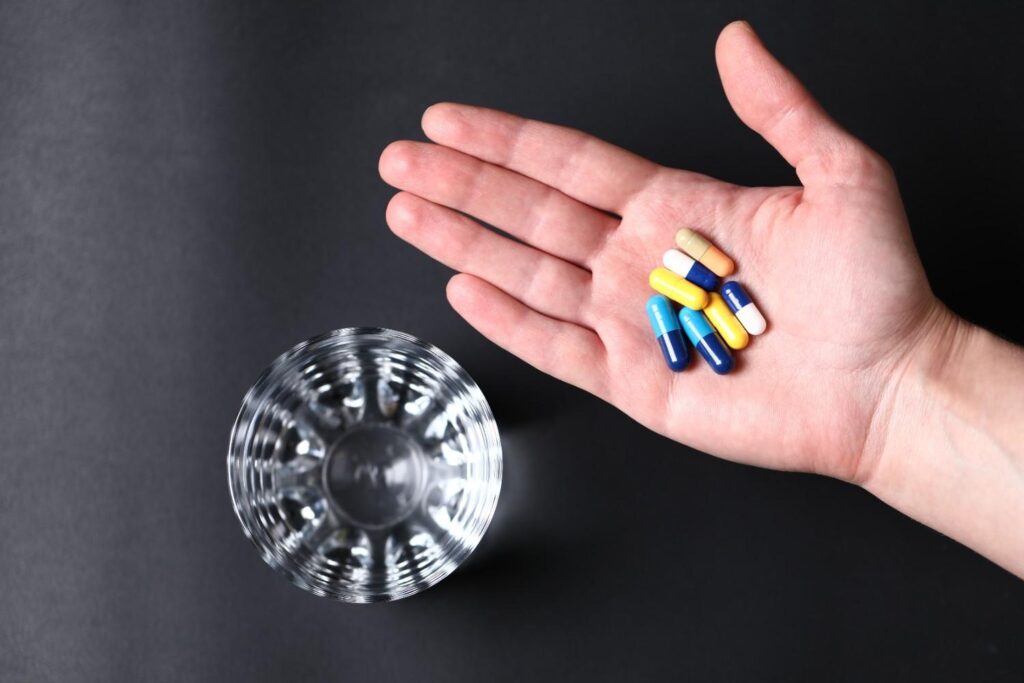Depression is more than just feeling sad; it’s a complex medical condition that affects millions of people worldwide, influencing how they feel, think, and handle daily activities. For many, finding the right treatment is a journey, and medication is often a crucial part of that path.
Understanding Classic Antidepressants
For many years, classic antidepressants have been the first line of defense in treating depression. They are well-researched, widely available, and have helped millions of people manage their symptoms.
How Do They Work?
Classic antidepressants primarily work by increasing the levels of certain neurotransmitters—chemical messengers—in the brain. These chemicals, such as serotonin, norepinephrine, and dopamine, play a significant role in regulating mood. By preventing the brain from reabsorbing these neurotransmitters too quickly, the medication allows them to remain in the space between nerve cells for longer, which can improve communication and, in turn, elevate mood.
Common Types of Classic Antidepressants

There are several classes of classic antidepressants, each working in a slightly different way:
- Selective Serotonin Reuptake Inhibitors (SSRIs): These are often the first type of antidepressant prescribed. They specifically target serotonin and generally have fewer side effects than older medications.
- Serotonin-Norepinephrine Reuptake Inhibitors (SNRIs): This class works on both serotonin and norepinephrine.
- Tricyclic Antidepressants (TCAs): One of the older classes of antidepressants, TCAs are effective but can cause more significant side effects. They are typically used when SSRIs or SNRIs aren’t effective.
- Monoamine Oxidase Inhibitors (MAOIs): Another older class, MAOIs are also very effective but require strict dietary restrictions to avoid serious side effects. They are usually considered a last resort.
What to Expect: Onset of Action
One of the most important things to know about classic antidepressants is that they don’t work overnight. It typically takes four to eight weeks of consistent use to feel the full therapeutic effects. Patients might notice small improvements in sleep or appetite before their mood begins to lift. This delay can be challenging, and it’s crucial to continue taking the medication as prescribed, even if the benefits aren’t immediately apparent.
Potential Side Effects
Side effects are common, especially when starting a new medication. For classic antidepressants, these can include:
- Nausea and digestive issues
- Headaches
- Drowsiness or insomnia
- Weight gain
- Sexual dysfunction
Many of these side effects are mild and may lessen over time as the body adjusts. A healthcare provider can offer strategies to manage them.
Exploring Rapid-Acting Antidepressants
In recent years, a new category of treatments has emerged, offering hope for faster relief, particularly for those with treatment-resistant depression. These are known as rapid-acting antidepressants.

A Different Mechanism of Action
Unlike classic antidepressants that focus on serotonin and norepinephrine, rapid-acting antidepressants work on a different neurotransmitter system: glutamate. Glutamate is the most abundant excitatory neurotransmitter in the brain and plays a key role in neuroplasticity—the brain’s ability to form new neural connections.
Medications like ketamine and its derivative, esketamine, work by blocking a receptor in the brain called the NMDA receptor. This action leads to a surge in glutamate, which is thought to quickly trigger the growth of new synapses (connections between brain cells). This rapid rewiring can lead to a swift reduction in depressive symptoms.
What Makes Them “Rapid-Acting”?
The most significant difference is the speed of onset. While classic antidepressants take weeks to work, rapid-acting treatments can produce significant improvements within hours to a few days. This can be life-changing for individuals in acute distress or who have not responded to other treatments.
Potential Benefits and Risks
The primary benefit is speed. For someone experiencing severe, debilitating symptoms, this can mean a faster return to functionality and safety. However, these treatments also come with unique considerations and risks. For example, ketamine is administered in a clinical setting under medical supervision due to potential side effects like dissociation (feeling disconnected from one’s body or reality), sedation, and changes in blood pressure. Long-term effects and the optimal duration of treatment are still being studied.
Efficacy and Side Effects: A Head-to-Head Comparison
When choosing a treatment, it’s essential to weigh how well it works against its potential side effects.
- Speed of Relief: Rapid-acting antidepressants win here, hands down. They offer relief in days, not weeks.
- Side Effect Profiles: Classic antidepressants have a well-documented list of side effects that are often manageable but can be persistent. Rapid-acting antidepressants have more immediate, short-term side effects during and after administration, but these typically resolve quickly.
- Who Benefits Most?: Classic antidepressants are a suitable first-line treatment for mild to moderate depression. Rapid-acting antidepressants are generally reserved for individuals with severe or treatment-resistant depression who haven’t found relief with at least two other types of antidepressants.
Making the Right Choice for You
The decision of which antidepressant to use is a personal one, made in close consultation with a healthcare provider. Several factors will influence this choice:
- Severity of Symptoms: Is the depression mild, moderate, or severe? Is there an immediate risk?
- Treatment History: Has the patient tried other antidepressants before without success?
- Medical History: Other health conditions can influence which medication is safest.
- Patient Preference: Some individuals may prefer a daily pill, while others may be open to in-clinic treatments like infusions or nasal sprays.
Openly discuss your symptoms, treatment history, and any concerns with your doctor. Ask about the timeline for effects, potential side effects, and what the treatment plan will look like long-term. Finding the right medication often involves some trial and error, but with options for everything from daily medication to specialized ketamine treatment in Salt Lake City, there is hope for finding relief.
Conclusion
Navigating depression treatment can feel overwhelming, but you don’t have to do it alone. Whether a classic or rapid-acting antidepressant is the right choice, the goal is the same: to help you feel better and get back to living your life.










